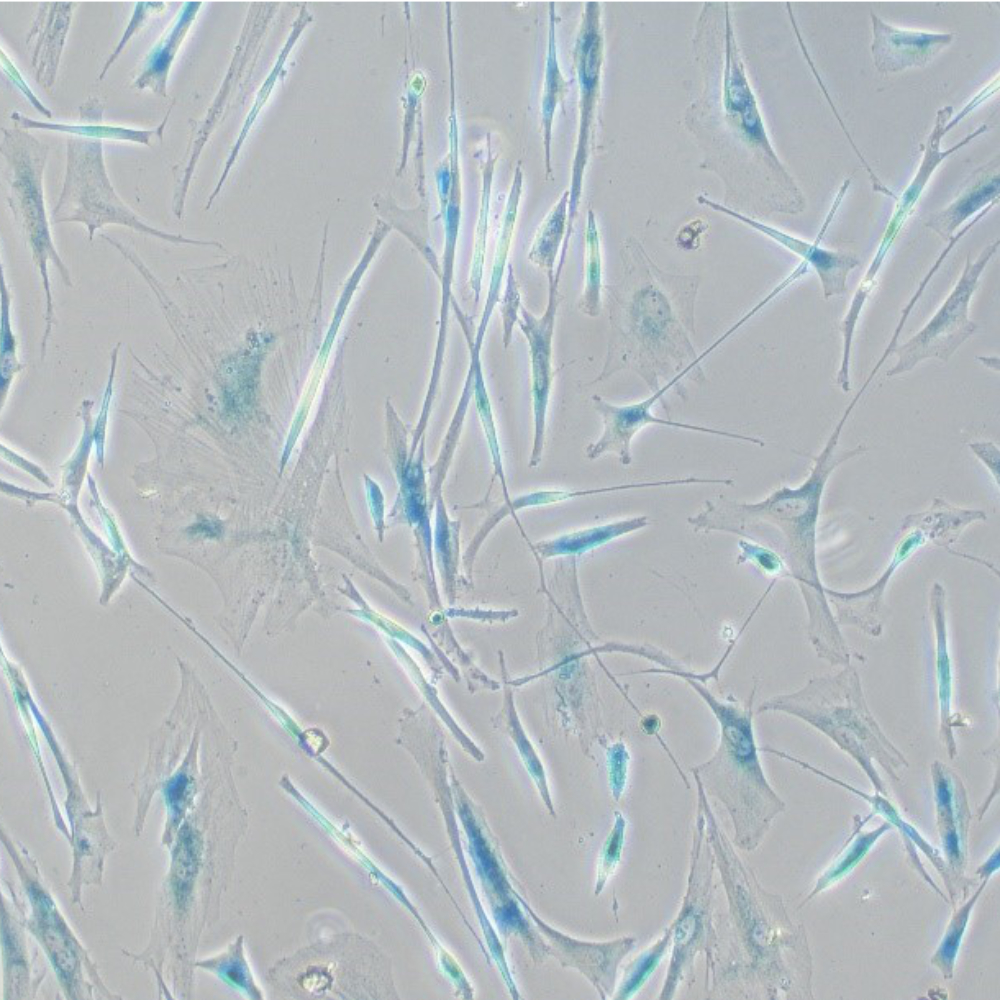Spotlight - Selt Group
pLGG cells in the lab
In order to be able to carry out comprehensive drug tests, sufficient quantities of pLGG cells must be cultivated in the laboratory. The majority of pLGG tumor cells are in a state of so-called oncogene-induced senescence (OIS) as a result of MAPK overactivation. Tumor cells in OIS are not actively dividing but survive. In vitro proliferation of the cells is hardly possible.
Our laboratory uses an inducible lentiviral system for the expression of the viral protein SV40-TAg to inhibit key signaling pathways of OIS in tumor cells and bypass OIS. In this way, it is possible to generate long-term culture models of pLGG, which can be used for comprehensive drug testing.
The OIS feature distinguishes tumor cells from healthy surrounding cells and can therefore also be a target for a tumor-specific therapeutic approach. Senescent cells are resistant to current therapies (chemotherapy, MAPKi) and can promote relapse if they overcome the OIS state. Targeted killing of senescent pLGG cells using senolytically active substances therefore represents a promising new complementary therapeutic approach. The basic feasibility of senolytic therapy has been demonstrated in vitro using BCL-XL inhibitors.
In principle, active substances from a wide range of drug classes can have a senolytic effect. Whether they do so depends on the context, e.g. the type of senescence and the type of tumor. The aim of our work is to identify clinically available drugs with previously unknown senolytic effects on pLGG cells in order to bring them into clinical application in synergistic combination therapies with BCL-XLi.
In addition to senolytic substances, we are also investigating the effect of new inhibitors of the MAPK signaling cascade (new MEK inhibitors, new RAF inhibitors) and histone deacetylase inhibitors (HDACi) on pLGG cells.
Promising therapeutic approaches are to be clinically tested as part of early clinical trials (van Tilburg Group).

